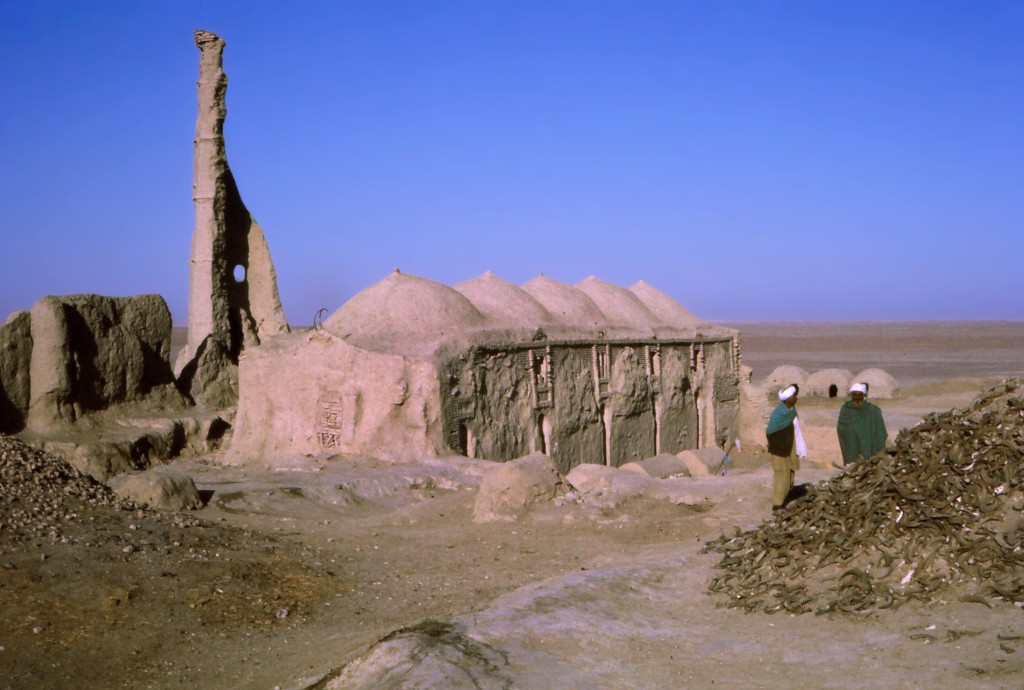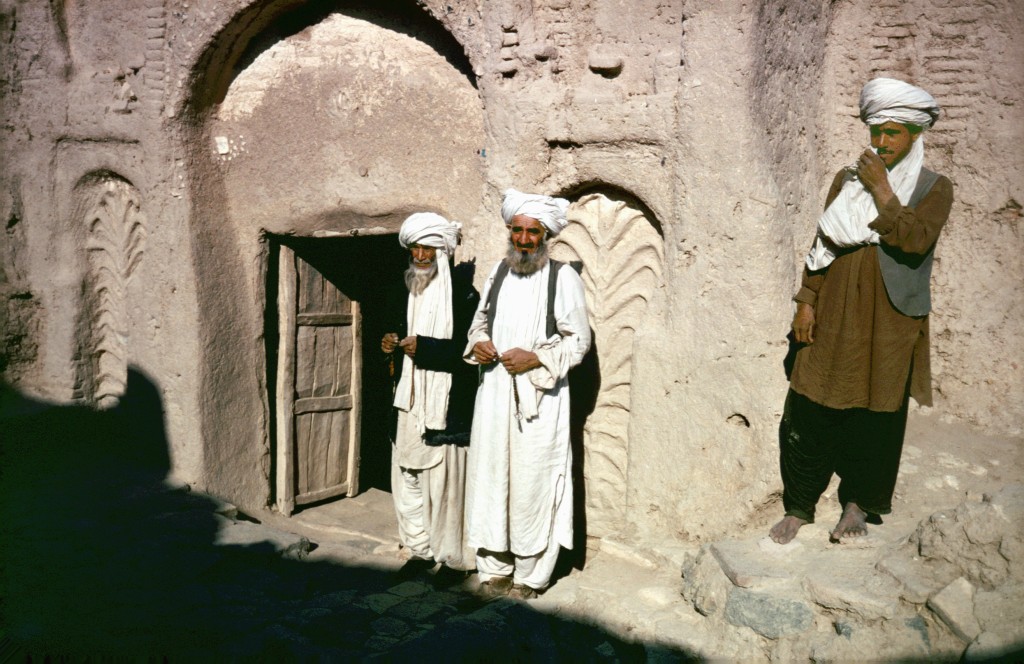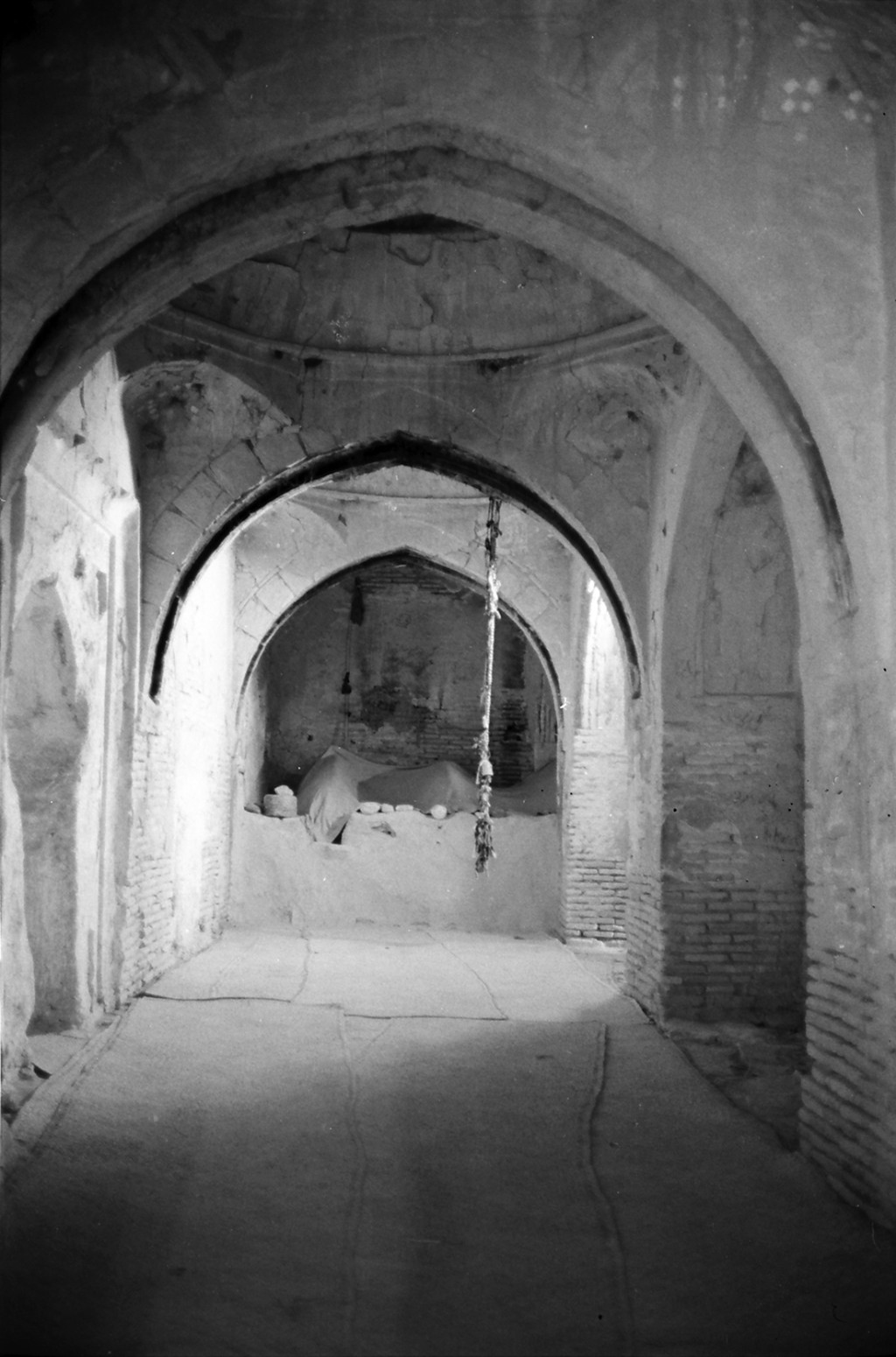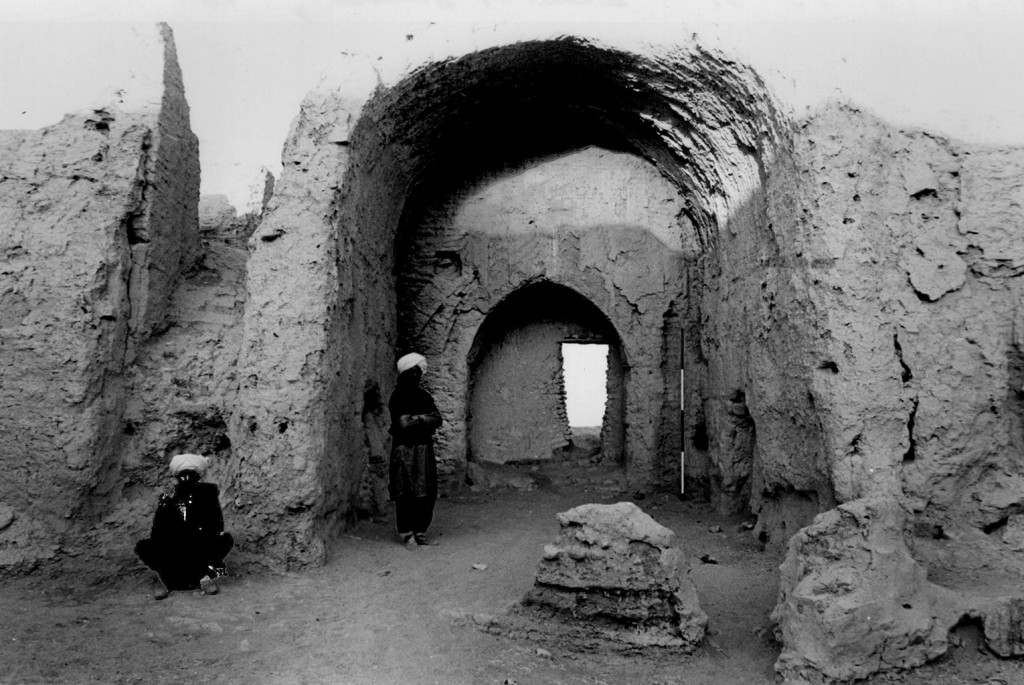Ziyarat-i Amiran Sahib
Gazetteer ID: 1264
Latitude: 30.97812764 Longitude: 62.13123234
Enlarged satellite view
The shrine dedicated to Amiran, a heroic figure who helped convert the region to Islam, is still in use today. Located at the northern edge of Sar-o-Tar, it consists of the purported burial hall of Amiran and two of his siblings, as well as a variety of other buildings, some abandoned, some still in use.
The modern shrine seems to have been converted from earlier use as a mosque. Amiran, his brother, and his sister are all interred in mudbrick tombs at one end of what was once the qibla hall, walled off from the courtyard of the mosque, now used as a cemetery. On a mound outside the shrine is a large pile of goat horns, along with the streams of animal blood, evidence of the sacrifices brought by pilgrims. The shrine attendants live in modest rooms adjacent to the shrine.
Across the path from the modern shrine is a 4-iwan mosque or madrassa. One part of this building is also used for sacrificial offerings but most of the building is no longer in use. At the north corner stands the remains of a tall minaret, with a circular staircase to the top. Further south are additional ruined buildings that may once have been caravanserai or served other functions. One of the buildings features keyhole niches and baked brick decoration reminiscent of other Ghaznavid buildings in Sar-o-Tar, which helps fix a date to the building of the original shrine.
The Zarkhan Canal, one of the largest canals leading from the Helmand River, runs just south of the shrine then past Qala-i Amiran Sahib, a very large Timurid estate whose owner may have been the sponsor of the Amiran shrine.






